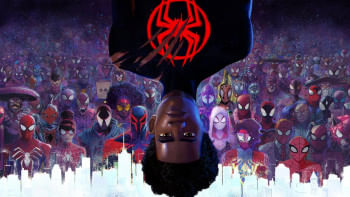‘Sunrise on the Reaping’: Fan service and repetitive themes weigh down ‘Hunger Games’ prequel

Suzanne Collins' Hunger Games series has captivated pop culture with its bold take on tyranny, sacrifice, and resistance, spanning Katniss Everdeen's blazing defiance in The Hunger Games (2008) to her final stand in Mockingjay (2010) against Coriolanus Snow's cold cruelty. The buzzed-about prequel Sunrise on the Reaping (Scholastic Press, 2025) thrusts us into the real story of Haymitch Abernathy's harrowing run in the 50th Hunger Games—the Second Quarter Quell—and how the tragedy twists him into the drunken recluse readers first met in 2008.
To recap: In Panem, a post-apocalyptic society split into 12 struggling districts under the Capitol's oppressive rule, the Hunger Games is a brutal annual contest. Each District must send a boy and a girl, known as tributes, aged 12 to 18, to fight to the death in an arena—a battleground designed by the Capitol with traps—on live television. For the Capitol, this ritual reinforces its control, rooted in the aftermath of a failed uprising, while contrasting its opulence with the suffering of the Districts. Haymitch, the victor of the 50th Hunger Games, mentors Katniss, the District 12 tribute, for the 74th and 75th Hunger Games, guiding her as she ignites a rebellion against the Capitol's cruelty.
Reaping is the fifth novel in the series and the second prequel after The Ballad of Songbirds and Snakes (2020), which focused on the youth and radicalisation of Snow, the future president of Panem.
The Second Quarter Quell, a unique edition of the Games, is the bloodiest in the series' lore. With twice the number of tributes selected, the competition is even more intense. The differences between these special editions and standard Games, as well as their impact on the tributes and Districts, were addressed in Catching Fire (2009), which depicted the 75th Hunger Games, aka the Third Quarter Quell. In this event, tributes were drawn from the existing pool of victors to show to the Districts that even the strongest among them are vulnerable. Meanwhile, Songbirds and Snakes was a stunning prequel that provided a unique perspective on Snow and deeply explored power and human nature, with subtle and natural connections to the original books. It depicted the 10th Hunger Games, highlighting their crude, formative state before they became the polished spectacle of Katniss' era, and how Snow's ambition and ideas transformed them into tools of propaganda and control, enriching the series by revealing the origins of Panem's brutality. So, does Reaping fill a narrative gap and stand tall by unveiling Haymitch's raw, rebellious soul?
While the book has its moments and Collins' skill in blending political commentary with page-turning storytelling is undeniable, it stands out to me as the weakest entry in the series. This is largely due to its heavy reliance on fan service and repetition of themes from earlier novels.
The book opens on Haymitch's 16th birthday, which unfortunately coincides with Reaping Day, when tributes from each District are selected to compete in the Hunger Games. Haymitch has simple wishes, like any teenage boy: to dodge responsibilities, spend time with his girlfriend, and enjoy a birthday dinner with his mother and younger brother. An early plot twist thrusts him into the Second Quarter Quell.
What follows is familiar to fans of the series: The tributes' journey to Panem, the revelation of the decadence and cruelty at the heart of the Capitol and many of its residents, a dramatic parade, a training montage of sorts, and a flamboyant interview with Caesar Flickerman. If you've read the preceding four books—and it's advisable to do so before starting this one—returning to this world will be quite easy.
Haymitch's life mirrors Katniss'—both were born in an impoverished neighbourhood of District 12, both have a widowed mother and a younger sibling, and both suffered the loss of a father in a tragic coal-mining accident. They also end up in the Games due to circumstances beyond their control and form bonds with younger allies like Louella and Rue. Their losses strengthen their unyielding spirits. This close mirroring reeks of fan service, as it banks on fans' attachment to Katniss' journey. At times, the narrative also feels overly direct.
As we learn in Reaping, the reality of Haymitch's trip to the arena differs significantly from the Capitol's packaging of it. When Haymitch wins, he does so not as a ruthless survivor but as a rebel seeking to break the arena itself. I found the execution of the rebel-focused plot lacking because Haymitch is too similar to Katniss. Haymitch puts Snow in the same situation he falls into with Katniss. And just like with Katniss, Snow decides to keep Haymitch alive and use him as a pawn.
The Capitol cuts the final footage of the Second Quarter Quell to exclude the acts of defiance and unity among the tributes. Channelling George Orwell's 1984, Collins portrays a regime twisting facts to cling to control. Her work is as timely as ever, arriving at a moment when US history is being actively scrubbed, like how references to transgender people were erased from the Stonewall National Monument website. In Bangladesh, during the uprising that ultimately led to its fall, Sheikh Hasina's regime crafted a narrative of conspiracy to mask student grievances and protect its authority, deflecting questions about deaths and government failures while ensuring the powerful dictate what is "true".
Yet, despite tapping into the truth-twisting fears gripping us today, Reaping does not have much to convey and what it does convey is drowned out by repetition. We have seen the Capitol's propaganda machine in action in earlier books, from its beginnings during the 10th Hunger Games to its refinement by the 74th Hunger Games and the Second Rebellion. We've also seen how District 13 uses Katniss in their propaganda to counter the Capitol's influence. Censoring the Games to cover up the Capitol's mistakes and omitting acts of defiance are nothing new to the series. Although the Capitol's censorship during the Second Quarter Quell is more extreme than what we have seen before, the exploration of propaganda was already effectively addressed through Katniss. This concern stayed with me throughout Reaping. The book often feels like a 'greatest hits' compilation of what Collins has written before; it is packed with easter eggs and rolls out a younger version of a known character every few chapters—this nostalgic clutter detracts from the story's stronger points. While it's nice to see characters like Beetee and Effie again, their roles don't necessitate their return. Many consider Catching Fire and the Third Quarter Quell the pinnacle of the Hunger Games franchise, and it seems Collins aimed to replicate that impact with the Second Quarter Quell, leaning too often on past glories.
It is stated at the end of Reaping that Haymitch wasn't the right person at the right time to bring down the Capitol and the Hunger Games; instead, someone luckier or smarter needs to come along to finish the job he started. Viewed through this lens, the repetitive themes and overdone connections between characters begin to seem more acceptable. Yet, the execution of these ideas simply wasn't developed enough to make Reaping as strong a story as the earlier entries in the series. It is set to follow in the footsteps of the other books, with a film adaptation scheduled for release in November 2026. I feel it primarily exists to facilitate that adaptation.
Shababa Iqbal is a journalism graduate of Independent University, Bangladesh (IUB). She likes Jane Austen's novels and Disney movies. Email: [email protected].

 For all latest news, follow The Daily Star's Google News channel.
For all latest news, follow The Daily Star's Google News channel. 











Comments